Yesterday we looked at a number of European countries individually to see how they had been coping with the pandemic. Today, we are going to look at a selection of Asian countries and look at their raw case numbers and trends. Please note that the trends are all 5th Order polynomials because of the length of time the data covers. It's not ideal for some and where an alternate index has been used it is noted below.
Armenia: this is a bit of an unusual graph as it seems to suggest that they have only had a single wave that was slow developing, had a 2 month peak and has gradually (albeit inconsistently) reduced from early August. This is one of the graphs that is only 4th polynomial in the trend line and could equally have been 3rd.
 Azerbaijan
Azerbaijan: this is a fairly normal shaped trend with a fairly extended first wave that took 3 months to peak followed by a 7 week fall in case numbers and then a 2nd wave over the last month which is still growing slowly.
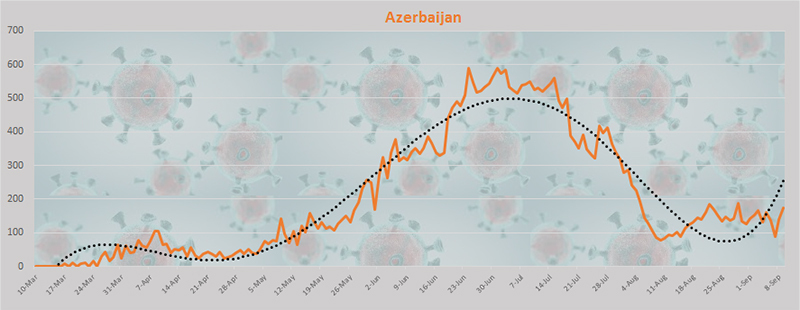 Bahrain
Bahrain: this is a fairly normal shaped trend with two clearly defined waves although in this instance they really didn't get the level of reduction between them that some other countries have managed as can be seen from the fairly shallow dip in the trend line. The second wave is also just starting to be worse then the first one and whether the upward trend of the last few days continues may determine how bad it gets.
 Bangladesh
Bangladesh: this looks like they are only just coming out of the first wave and not particularly fast either. This is a 4th order polynomial.
 Indonesia
Indonesia: this graph looks like they are only still in the midst of the first wave and the highest point was only a week ago. This is a 3rd order polynomial.
 Iran
Iran: this data set is just inconsistent. They appear to have had a couple of peaks in March and June and it is trending upward again now.
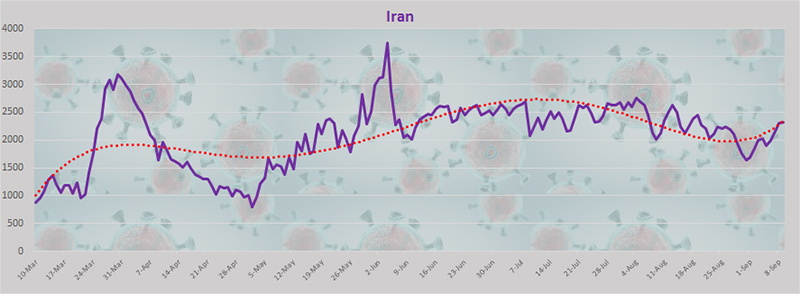 Iraq
Iraq: despite a later start than most with no real case numbers until the latter part of May, the numbers have continued to climb since then with the highest only 6 days ago and even yesterday barely less than that peak.
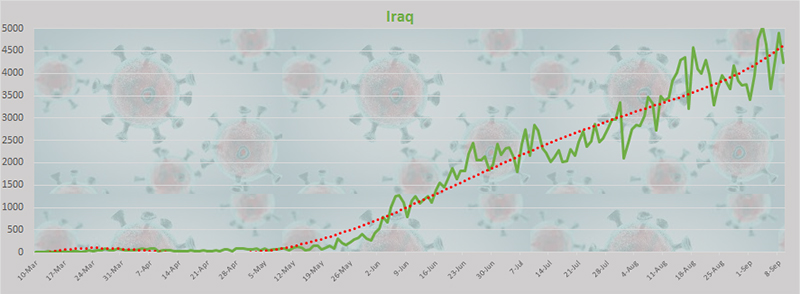 Israel
Israel: after a small early cluster, they seemed to have it under control through May and the first half of June but since then the overall trend has been upward and they recorded their highest number of cases to date, yesterday.
 Japan
Japan: similar to Israel they had a small early cluster; a period of low case numbers across May and June but then they had a second wave that peaked in early August but have pretty much trended down since.
 Kazakhstan
Kazakhstan: they had very low cases numbers all the way through until the end of June but then it took off with a vengeance over the following 4 weeks but they clearly got a grip on it since and case numbers have declined rapidly since that point. This is a 4th order polynomial.
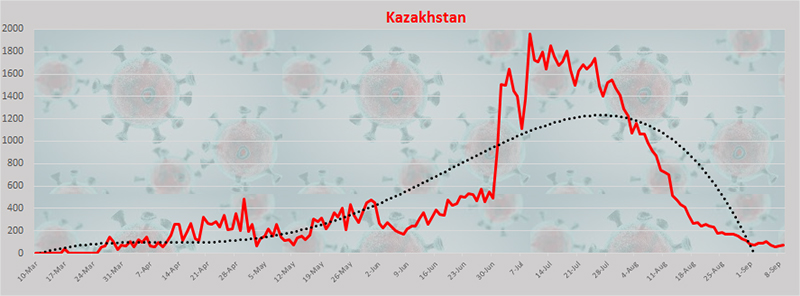 Kuwait
Kuwait: this is another country that still looks to be their first wave and apart from a couple of weeks in June where it improved slightly the current case numbers aren't far off the peak. This is a 4th order polynomial.
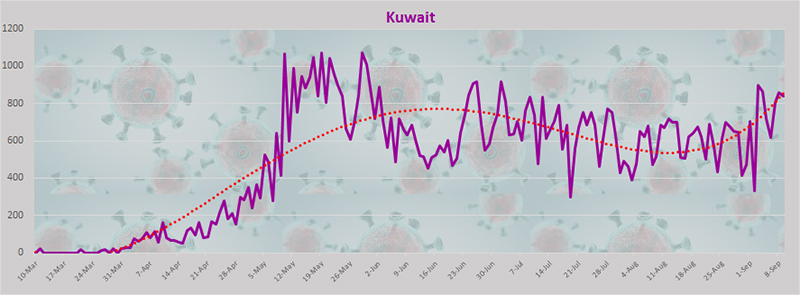 Lebanon
Lebanon: despite a long period where it seemed to be reasonably well contained all the way through to mid-July, they have been on a steady upward climb since then.
 Nepal
Nepal: they look to be in the midst of a second wave after getting the first one under control in late July but the trend since has been upward and their peak thus far was only 6 days ago.
 Oman
Oman: they didn't reach the peak of their first wave until mid July but they got the case numbers down very quickly from there and only the last three weeks have started to show a slight upward trend.
 Pakistan
Pakistan: they had a long climb to their mid-June peak but the overall trend since then has been downward and even the slight kick in the trend line this last week is minor.
 Philippines
Philippines: they also had negligible case numbers until the latter part of May and it looks like they had a small first wave through to the end of July but instead of dropping, a second larger wave started almost immediately and has only started to decline these last three weeks or so.
 Qatar
Qatar: they had a fairly steep rise to a peak in early June but case numbers have been steadily dropping since about mid June although there is a slight upward trend this last two weeks or so.
 Saudi Arabia
Saudi Arabia: they also had a fairly steep rise to a peak in mid June but case numbers have been steadily dropping since about early July apart from a spike in mid August.
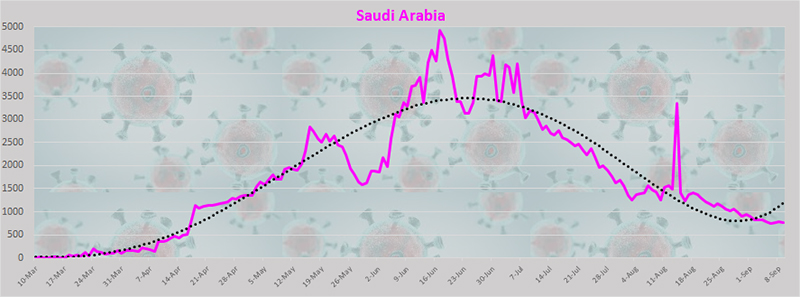 Singapore
Singapore: they have had fairly inconsistent case numbers but the overall trend recently has been downward.
 South Korea
South Korea: after an early wave back in March they seemed to have kept it under control all the way to late July before it started to trend upwards but at levels below the early peak. Thy had another large spike (their biggest) in late August but it seems to have calmed down now.
 Turkew
Turkew: they also had an early peak in April which was under control all the way to August before it started to trend upwards but only slowly so it's hard to tell where they are really at.
 UAE
UAE: a clear example of two distinct waves although the fall between them didn't exactly inspire confidence that they were on top of it and they are still currently in the second wave with a peak almost as high as the first.
 Uzbekistan
Uzbekistan: the final graph shows a relatively benign first wave followed by a much more severe second wave that peaked in mid August before the numbers trended downward again..
